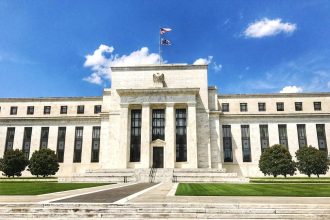Key takeaways
- The median transaction account balance in the U.S. is between $8,000, potentially insufficient for a few months without income.
- Generally, households with older members, higher income, and higher education levels have higher savings, but all should aim to save at least 15 percent of pre-tax income.
- Using high-yield savings accounts and creating a budget can aid in effective saving strategies.
Many bank accounts hold far less cash than U.S. consumers would need to cover even a few months without income, according to an analysis of federal data.
The median transaction account balance is $8,000, according to the Federal Reserve’s Survey of Consumer Finances (SCF), with the most recently published data from 2022. Transaction accounts include savings, checking, money market and call accounts, as well as prepaid debit cards.
While the exact amount that consumers should keep in savings will vary depending on their income and expenses, it’s generally a good idea to aim to save at least 15 percent of your pre-tax income, says Erik M. Baskin, founder of Baskin Financial Planning in Dayton, Ohio.
It’s also important to factor in paying down debt and having specific savings goals. “Once you have no debt, set goals, such as to have a six-month emergency fund, and save towards that goal,” says Jay Zigmont, PhD, CFP, founder of Childfree Wealth in Mississippi.
Consider stashing savings away in a high-yield savings account or a certificate of deposit to boost your savings. Take advantage of the high rates currently offered on these accounts, which can also help you prepare for a potential recession.
Key saving statistics
- The majority of U.S. households — 98.6 percent — have a transaction account, such as a savings account.
- Singles and younger adults tend to have lower transaction account balances.
- Less than half of U.S. households — 44 percent — said they were able to cover an unexpected $1,000 expense, like a car repair or medical bill, as of December 2023 polling.
- Most American adults — about 70 percent — haven’t seen an increase in their emergency savings balance over the past year.
- Slightly over half of U.S. adults have more emergency savings than they do credit card debt, as of December 2023.
- Almost three-fourths (72 percent) of adults surveyed in June 2023 say they are not currently financially secure.
Sources: Bankrate, Federal Reserve
How much does the average household have in savings?
While the median bank account balance is $8,000, according to the latest SCF data, the average — or mean — balance is actually much higher, at $62,410. The median balance may give a clearer picture of how much most U.S. households have saved, since the average figure can be skewed significantly by a small number of outliers with high account balances.
| Average U.S. savings account balance | |
|---|---|
| Median bank account balance | Mean bank account balance |
| $8,000 | $62,410 |
The SCF also breaks down average account balances by household type. Couples with no children have the highest median balance, while single parents have the lowest. Again, the average balance is skewed by outliers, so the median balance may be more representative of how much households have saved.
| Household type | Median bank account balance | Mean bank account balance |
|---|---|---|
| *Only includes those under 55 years old. | ||
| Single with one or more children | $2,400 | $16,800 |
| Single without children* | $4,000 | $19,320 |
| Couple with one or more children | $12,500 | $73,890 |
| Couple without children | $16,000 | $103,140 |
Average savings by age
Households with older individuals tend to have higher account balances — up to about twice as high — than younger households, though that gap was higher in previous years. There were two exceptions: Households with individuals ages 45 to 54 had higher median balances than those with members ages 55 to 64, and households with individuals ages 65 to 74 had mean balances higher than those over age 74.
| Age | Median bank account balance | Mean bank account balance |
|---|---|---|
| $5,400 | $20,540 | |
| 35-44 | $7,500 | $41,540 |
| 45-54 | $8,700 | $71,130 |
| 55-64 | $8,000 | $72,520 |
| 65-74 | $13,400 | $100,250 |
| >74 | $10,000 | $82,800 |
Because older consumers have had more time to build and invest their wealth, it’s only natural that they would have higher median account balances than younger generations. Some other factors that could impact the disparity in savings between younger and older consumers are that older consumers may have advanced more in their careers and may have more inherited wealth while younger consumers are more burdened by student loan debt.
Savings by age statistics
- According to the Bureau of Labor Statistics’ 2022 Consumer Expenditure Survey, those aged 45 to 54 have the most expenses, on average, per year.
- Only 31 percent of Gen Zers say they have enough savings to cover an unexpected $1,000 expense, compared with 43 percent of millennials, 36 percent of Gen Xers and 59 percent of baby boomers, according to Bankrate’s latest emergency savings report.
- Younger consumers are more likely to be hit by bank account fees, according to a Bankrate study: 46 percent of Gen Zers and 42 percent of millennials pay monthly bank fees, compared with only 22 percent of Gen Xers and 14 percent of baby boomers.
Average savings by education level
Education level is one of the factors that correlates with bank account balance, based on the SCF data, which indicate that the median and mean balances fluctuate along with how much education an individual has attained. The largest median balance jump is from those with some college ($5,200) to those with a bachelor’s degree ($23,700).
| Education | Median bank account balance | Mean bank account balance |
|---|---|---|
| No high school diploma | $900 | $9,130 |
| High school diploma | $3,030 | $23,380 |
| Some college | $5,200 | $33,410 |
| Bachelor’s degree | $23,370 | $116,010 |
Average savings by income
Similar to age and education level, income amount correlates overall with how much an individual has in savings. Income has the most consequential effect on bank account balance by far – with the median balance for the highest income bracket being more than 120 times than that of the lowest income bracket.
The most significant jump in median account balances is from the 80th to 89th percentile income range to the 90th and above percentile income range. It’s also worth noting that the median account balance for those with annual income in the top percentile range is at least $77,800more than those in the income tiers below.
| Income | Median bank account balance | Mean bank account balance |
|---|---|---|
| $0-$34,599 | $900 | $7,860 |
| $35,600-$59,499 | $2,550 | $16,410 |
| $59,500-$91,899 | $7,400 | $25,200 |
| $91,900-$153,099 | $15,760 | $44,070 |
| $153,100-$245,399 | $33,800 | $76,940 |
| $245,400+ | $111,600 | $353,030 |
The median account balance for most income groups has progressively increased since the 2013 SCF study. One exception is the median balance for the lowest income range, which has decreased by $40 since the previous report. The study is conducted every three years, with the most recently published data from 2022.
Average savings by race and ethnicity
As far as race, those classified as non-Hispanic whites had significantly higher median and mean account balances than those in the Hispanic and Black categories — reflecting a racial wealth gap, as white families hold more than five times the wealth of the typical Black or Hispanic family.
| Race/Ethnicity | Median bank account balance | Mean bank account balance |
|---|---|---|
| *The SCF’s “other” classification includes those who identified as Asian, Native American, Alaska Native, Native Hawaiian and Pacific Islander as well as those with more than one racial identification. | ||
| White | $12,000 | $80,040 |
| Black | $2,110 | $13,370 |
| Hispanic | $2,100 | $15,710 |
| Other* | $6,000 | $45,810 |
How much of our money should go to savings?
Many advisors recommend workers stash away 15 to 20 percent of income spread across accounts like certificates of deposit (CDs), money market accounts, savings accounts and other places where money can be protected and grow.
How much someone should tuck away depends on what they’re spending, says Greg McBride, CFA, chief financial analyst for Bankrate.
The best way to determine your monthly expenses is to create a budget that lists how much money is coming in every month and subtracts that from expense categories like housing, transportation, groceries, entertainment and credit card bills.
The average consumer had about $10,228 in income left over after taxes and expenses in 2022, according to a recent Consumer Expenditure Survey published by the U.S. Bureau of Labor Statistics. The data shows the average person shelled out about $6,080 a month, meaning, for three months’ worth of expenses, they should save at least $18,240, according to McBride’s recommendation.
Bottom line
Even with the challenges of inflation, having money in the bank to cover emergencies is possible when you have a budget and take control of your spending.
While establishing an emergency fund should be a top priority, it’s also important to consider retirement and other savings goals you may have. Over time and as you advance in a career, you may want to increase your contributions to retirement savings, so you can have eight times your salary saved by age 60 — the amount recommended by Fidelity.
To get the most out of your savings, it pays to shop for the best online high-yield savings account. Meanwhile, Bankrate’s savings calculators can help you determine how much to contribute to your savings for a variety of goals, and the home budget calculator can help with tracking spending.
— Bankrate’s Karen Bennett contributed to a previous version of this article.
Read the full article here














